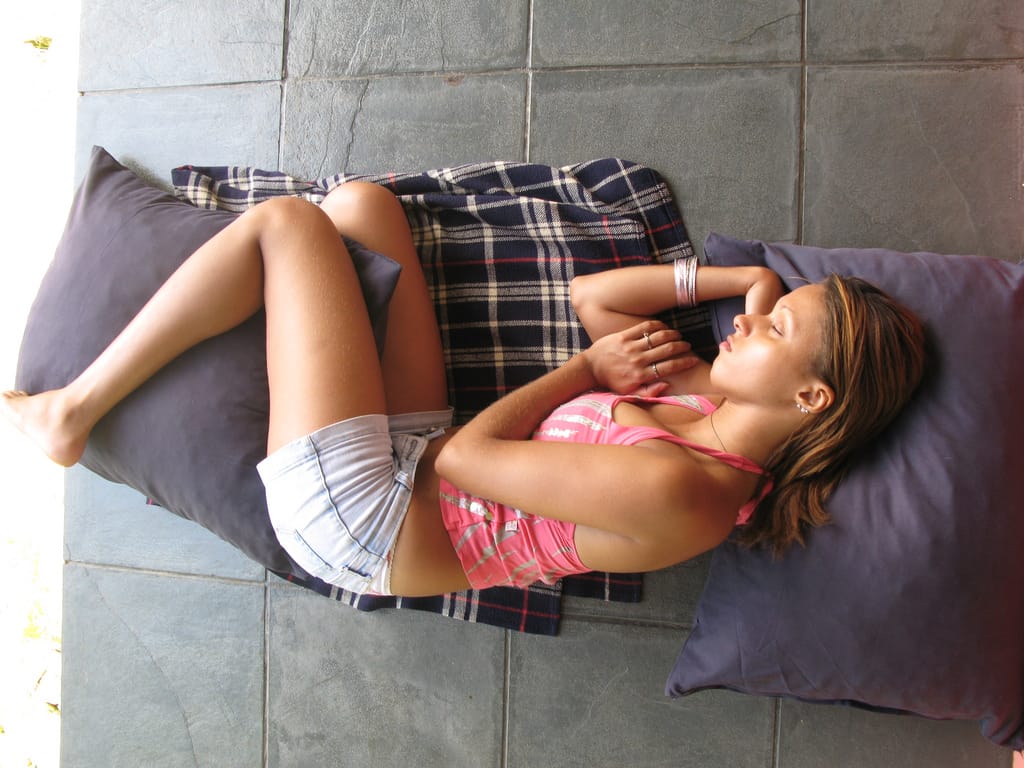There is a belief that the harder the sleeping surface, the better for the spine. We decided to check whether it is backed by scientific evidence.
According to survey VTsIOM, about half of Russians sleep soundly at night - 60% of men and 41% of women reported their satisfaction with the quality of sleep. At the same time, according to a joint study by VTsIOM and Sechenov University, 37% of respondents experience chronic lower back pain. Similar data received and as part of a survey by the hh.ru company in the Krasnodar Territory - 44% of respondents who have overtime at work complain of back and lower back pain. Another survey found that of all those who complain of back pain, 57–71% notice This also leads to morning stiffness in the back and night pain at rest. In search of relief, people experiment, in particular, try to sleep on the floor. In 2020, popular blogger Vladislav Petrenko as a challenge decided sleep on the bare floor for a month. According to him, “magic happened” - the back pain went away, waking up in the morning became easier and more pleasant, and his posture was straighter throughout the day. Sleeping on the floor advise with a sedentary lifestyle and those who run the risk of “getting scoliosis in front of the computer” (myth we discussed earlier that scoliosis can be acquired). Supporters sleeping on the floor write, that “an upright position forces the neck, head and spine to straighten and stretch, which helps correct posture.”
Although the spine is called the spinal column, it bears little resemblance to a perfectly straight column. The spine is not one long bone, but design from separate bone blocks - vertebrae - and cartilage located between them, performing shock-absorbing functions. The human spine consists of 32–33 vertebrae (seven cervical, 12 thoracic, five lumbar, five sacral, connected to form the sacrum, and three to four coccygeal), between which are located 23 intervertebral discs. The cervical and lumbar spine are the most mobile, and it is in them that pain most often occurs. Along the entire length of the spine there are muscle groups - flexors and extensors, which allow us to perform a variety of movements. In many ways, it is the overstrain of these muscles leads to nonspecific back pain. By the word “nonspecific” doctors mean those pains that are not caused by a specific disease, injury or abnormal development of the spinal column. That is, in most cases, back pain is muscle pain.
As already mentioned, the spine is not a straight line, and for its normal functioning there is no need to try to turn it into a perfectly straight line. The most correct The sleeping position is one in which the natural curves of the spine are preserved even without the help of muscles. If during sleep the spine acquires an unnatural bend, the muscles tense and try to return it to its normal position. It turns out that during such sleep these muscles will not rest, therefore, in the morning they will most likely remind themselves. This means that the easiest way to get rid of or avoid acquiring back muscle pain caused by muscle overwork during sleep is to ensure the most physiological posture.
In 2021, Italian scientists held A meta-analysis that included 39 studies to determine which sleeper firmness was most effective in reducing back pain. True, they did not consider sleeping on the floor, but they did consider extra-hard therapeutic mattresses. It turned out that medium-hard mattresses were most effective in relieving pain in the lumbar region. When resting on such a surface, the shoulders and hips press the mattress a little harder, and the lower back only touches it, which ensures that all the natural curves of the spine are preserved. A surface that is too hard does not allow the shoulder girdle and hips to “sink,” so the lower back muscles remain tense all night. Similar effectiveness for back pain show and water mattresses - they relieve symptoms much better than hard ones, but their advantages over ordinary mattresses of medium hardness have not yet been proven by doctors. At the same time, for people with excess body weight, it is hard mattresses that are most optimal; due to the greater weight, the shoulders and hips push down the average mattress much more than is anatomically necessary.
For other diagnoses that cause back pain, doctors also developed the most suitable sleep options. So, for osteoarthritis, it is best to sleep on your side, tucking your knees to your chest, and for degenerative diseases of the intervertebral discs, it is best to sleep on your stomach on a firmer mattress with a flat pillow under your stomach and hips. However, sleeping on the floor is not indicated as suitable for any of the diseases.
Probably, the idea about the benefits of sleeping on the floor came from anthropological and historical observations. Representatives of those civilizations that still sleep on the ground actually suffer less from back pain, demonstrated article by Michael Tetley 2000. In his expeditions around the world, the scientist noted what sleeping positions are adopted by those peoples who traditionally do not use the beds and mattresses we are accustomed to. These poses are significantly different from those taken in a dream by a person living in a house.

At the same time, the author in his article does not take into account other differences between representatives of civilizations that practice sleep on earth. In particular, their level of mobility and physical activity is much higher than that of a city resident, which cannot but affect their muscles and musculoskeletal system. Another important difference between sleeping on the ground and sleeping on the floor is that the floor is much harder than the ground.
Finally, it is worth remembering that gender, especially with carpet covered - this is a very dusty place. For an asthmatic or allergy sufferer, sleeping on the floor can lead to an exacerbation of the disease. Moreover, according to the laws of physics, cold air sinks down and warm air rises, so the floor is always the coolest part of the room. Conducting experiment On 14 Japanese volunteers sleeping on a wooden floor in a sleeping bag, scientists noted that those who placed corrugated cardboard under the sleeping bag had more sound sleep. They explained this by saying that too low a floor temperature commands the body to wake up earlier than necessary for proper rest. Therefore, if you still want to practice sleeping on the floor, you should consider additional heating.
Experts from the Sleep Foundation also notethat sleeping on the floor may be associated with a greater risk of injury for the elderly and those with limited mobility, as rising to a standing position from a low surface places greater strain on the back. Sleeping on a higher bed will suit them.
Thus, experiments show that a medium-hard mattress is best for treating muscle pain, as it allows the spine to maintain natural curves and does not overstrain the muscles. In urban conditions, sleeping on the floor is unlikely to have any therapeutic effect, because, unlike the aborigines, who sleep on the ground all their lives, residents of megacities simply do not know the necessary positions and are more likely to overstrain their muscles and develop additional problems than benefit their body.
Cover image: Naty Sweet from Rio de Janeiro, Brazil, CC BY 2.0, via Wikimedia Commons

Most likely not true
Read on the topic:
- Is it true that sleeping too much is bad for you?
- Is it true that sleeping on your left side is harmful to your health?
If you find a spelling or grammatical error, please let us know by highlighting the error text and clicking Ctrl+Enter.






